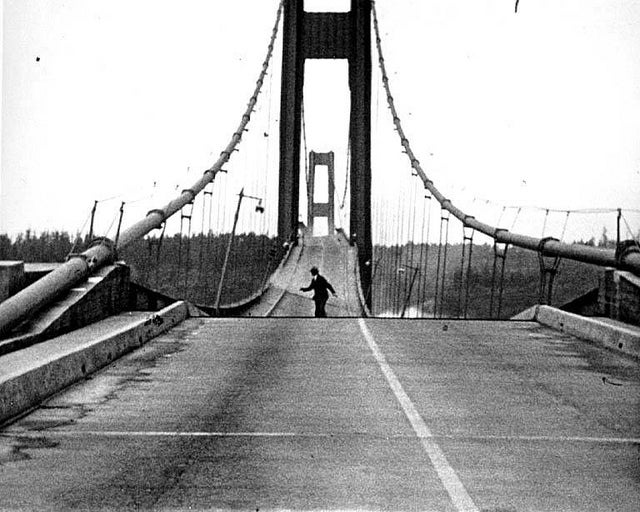Tacoma Narrows Bridge

The Collapse of the Tacoma Narrows Bridge
The Tacoma Narrows Bridge was well known for its vertical oscillations; indeed, it earned the nickname “Galloping Gertie” because it would oscillate vertically in winds of only 3-4 miles per hour. On November 7, 1940, just four months after it opened, as the bridge was engaging in its usual vertical activity, the nature of the motion changed suddenly from pure vertical to pure torsional. This violent twisting motion persisted for about 45 minutes, changing occasionally from one-noded to no-noded twisting, and the bridge collapsed.
We argue that the motion of suspension bridges is governed by nonlinear differential equations and that the inherent nonlinearity yields the fascinating behavior that was observed at Tacoma Narrows, including:
- the existence of large amplitude motion that persists over long time
- the changing nodal structure of the motion
- the dramatic change from vertical to torsional oscillation.
For my Ph.D. thesis, under my advisor P.J. McKenna, we propose a model for the torsional motion of the center span of the bridge, prove the existence of multiple periodic solutions to the equation of motion, and numerically solve the equation. The qualitative properties of our solutions match the phenomena which were observed at Tacoma Narrows on the day of the collapse. We illustrate these solutions using computer graphics.



